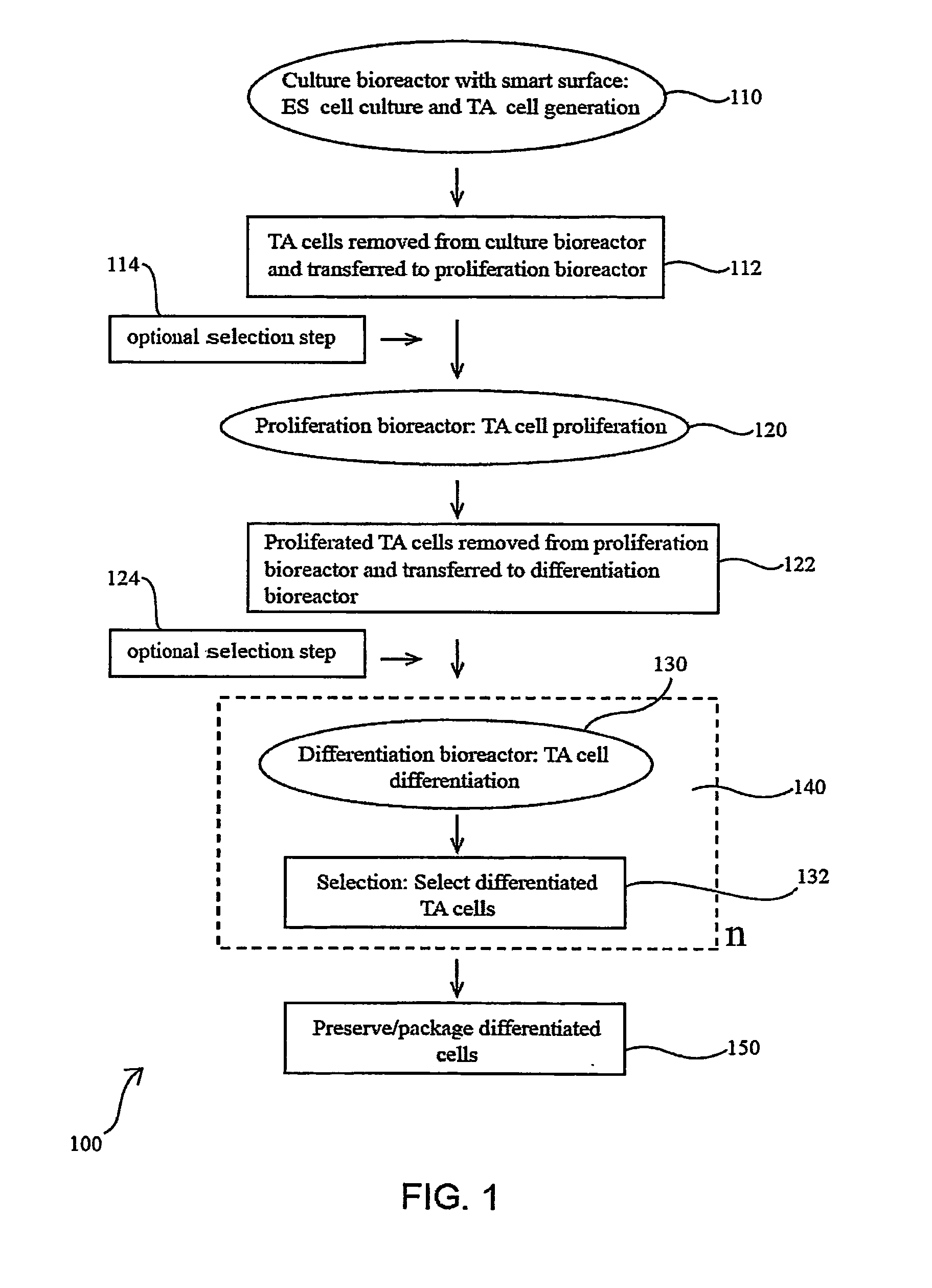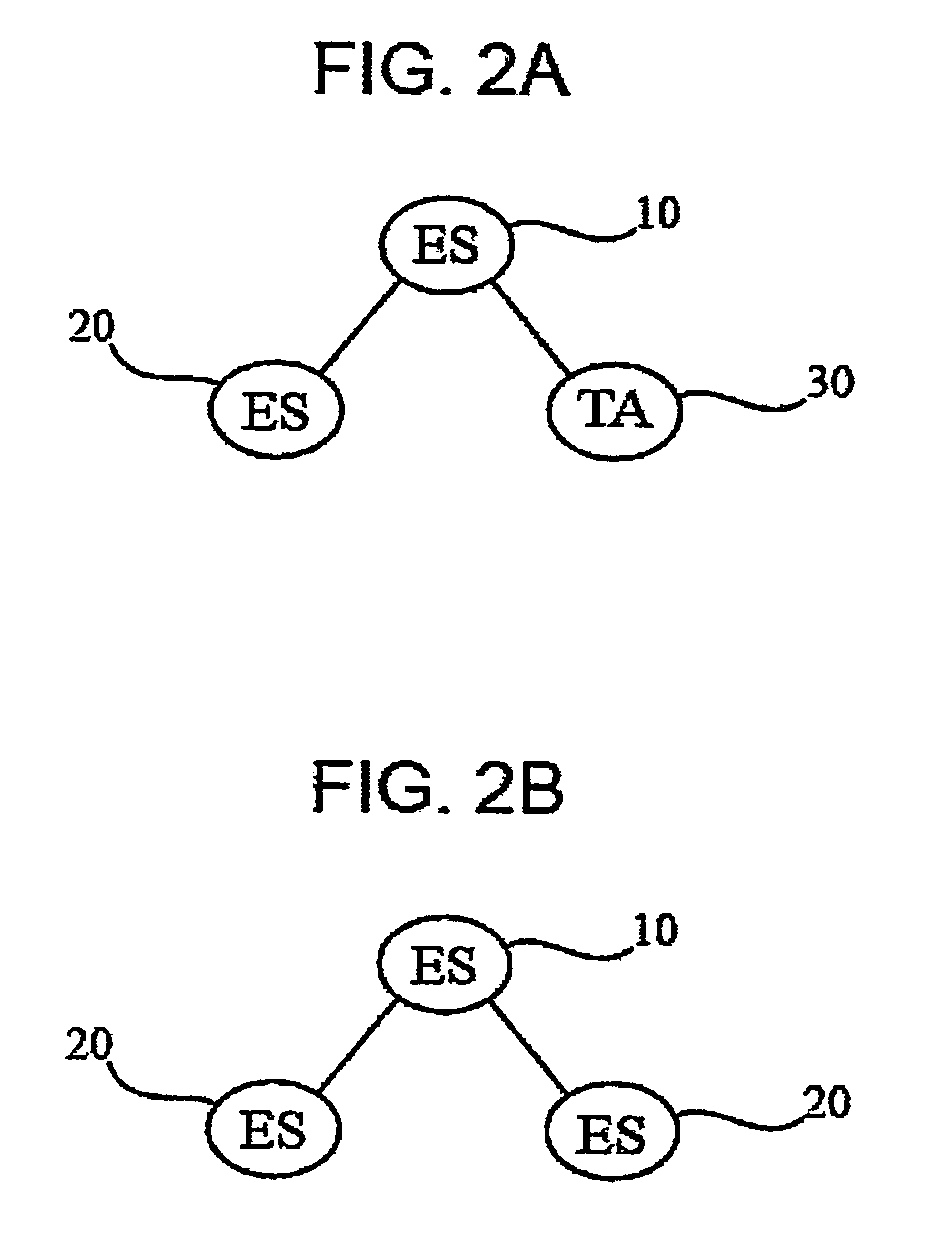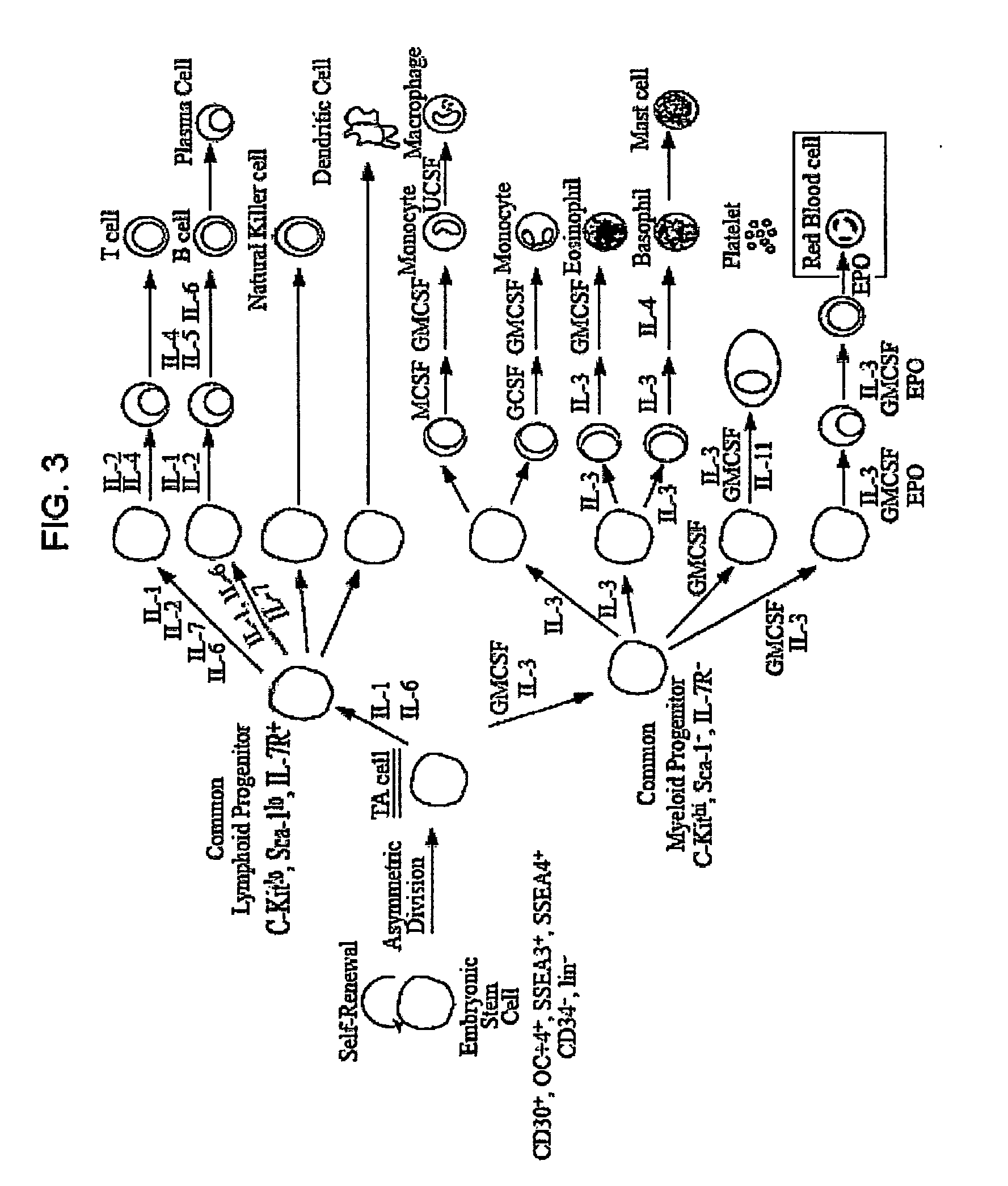Methods for producing blood products from pluripotent cells in cell culture
a cell culture and pluripotent cell technology, applied in the field of cell culture production of pluripotent cell blood products, can solve the problems of increasing the risk of contracting an infection from an autologous blood transfusion, limiting the number and inadequate availability of transfusible blood products to meet current needs
- Summary
- Abstract
- Description
- Claims
- Application Information
AI Technical Summary
Benefits of technology
Problems solved by technology
Method used
Image
Examples
example 1
[0096] Aggregation of hESC to Enhance Differentiation into Cells of the Hematopoietic Lineage
[0097] Aggregation protocols for two HESC lines were established using two methods: aggregation by gravity and aggregation facilitated by centrifugation. Both protocols utilize serum-free media and low adhesion plates designed to facilitate formation of cellular aggregates.
[0098] hESCs grown on mouse feeder cells were passaged the day before the procedure and were used in the experiments at approximately 60-80% confluency. To ensure identification of the approximate number of cells that would be present in the created aggregated bodies, the starting hESC cells were harvested, suspended in serum-free media, and the concentration of the cells determined as described below. For each flask of hESCs used, the growth medium was aspirated, and the cells washed once with PBS (Ca2+ and Mg2+ free). TVCS (0.25% trypsin / EDTA (Gibco, Life Technologies) supplemented with 2% heat inactivated chicken seru...
example 2
[0101] Analysis of Differentiation of Cells to the Hematopoietic Lineage Using the Aggregation Techniques
[0102] The effect of the aggregation techniques described in Example 1 was then examined for each cell line.
[0103] Following incubation from day 0 to day 11 following aggregation, the cultured aggregates were plated into fresh, tissue culture grade 96 well flat bottomed plates to allow further expansion. Prior to plating, the plates were coated with a 0.1% gelatin solution in dH20 for at least 15 minutes, and the remaining non-attached gelatin aspirated prior to use. Additional dH20 was added to the outside wells of the coated plates to prevent desiccation of the aggregates after plating. The medium used for culture in the flat bottomed plates was a-Differentiation medium-based medium with the addition of specific blood growth factors (See Table 1).
TABLE 1Exemplary growth factors for culture mediaworkingvol forGrowthconcen-10 mlsfactorsupplierstocktrationCDMhBMP4R&D Systems10...
example 3
[0109] Effect of Cell Density on Differentiation Efficiency
[0110] The impact of cell density on the wells was then examined using Aggregation Technique 2.
[0111] Cells were harvested in differentiation medium, and the approximate concentration of the initial cell suspension determined as described in Example 1. The concentration of the cells was then further diluted in media in varying concentrations to demonstrate differences in aggregation and differentiation efficiency. HESC populations were suspended in media to achieve the following approximate cell numbers per 100 μl: 300, 500, 1000, 2000, 3000, 4000 and 5000. The cells were aggregated according to Technique 2, i.e. by spinning the plates at 1500 rpm at 4 minutes at 4° C., and incubated as described in Example 1. The cells were incubated and replated, and numbers of wells containing blood cells was determined, as described in Example 2. Each of the cell lines examined displayed a specific optimum concentration for differentia...
PUM
| Property | Measurement | Unit |
|---|---|---|
| time | aaaaa | aaaaa |
| time | aaaaa | aaaaa |
| time | aaaaa | aaaaa |
Abstract
Description
Claims
Application Information
 Login to View More
Login to View More - R&D
- Intellectual Property
- Life Sciences
- Materials
- Tech Scout
- Unparalleled Data Quality
- Higher Quality Content
- 60% Fewer Hallucinations
Browse by: Latest US Patents, China's latest patents, Technical Efficacy Thesaurus, Application Domain, Technology Topic, Popular Technical Reports.
© 2025 PatSnap. All rights reserved.Legal|Privacy policy|Modern Slavery Act Transparency Statement|Sitemap|About US| Contact US: help@patsnap.com



